
 Flash News
Flash News
Korça/ 40-year-old man jumps from fifth floor balcony, in critical condition
Croatia restores compulsory military service
Illegal constructions in Theth, Manja demands disciplinary proceedings against prosecutor Elsa Gjeli
Details from the murder of Renis Dobra, the perpetrators came with 2 Range Rover cars from Rrëshen
The Supreme Court left him in prison, Meta addresses the 'Constitution'
'The government's megaphone': How the PR machine is undermining journalism in Albania

On the screen at noon on March 11, the mayor of Tirana appeared calm and smiling, as he inaugurated the construction of a kindergarten in the Yzberisht neighborhood of Tirana. The camera followed Erion Veliaj in every gesture, as he inspected the kindergarten facilities, asked questions about the fairy tales the children were learning, and listened attentively to the kitchen staff, as he boasted about replacing margarine with olive oil.
This video, carefully curated in every detail by the Municipality's press office, was intended to show a political leader in charge. But while the television stations broadcast the pre-prepared news story with the 'live' logo, the subtitles announced Veliaj's arrest by order of SPAK. In photos published later from the moment of the escort, Veliaj appears sullen and with a tense face, while two agents of the National Bureau of Investigation escort him to a black car with a file in hand.
The video of the inauguration of the 'Luleborë' kindergarten in Yzberisht is not the first case where Erion Veliaj or other majority officials appear in propaganda film materials, which are sold to the public by the media as news reports, challenging ethics and professionalism in journalism.
A monitoring conducted by BIRN during January-February 2025 revealed that dozens of materials prepared by the press offices of the main institutions in the country were broadcast by the main audiovisual media without editorial intervention.
The data raises disturbing questions, as this practice raises doubts about the media's ability to be critical and demonstrates a new form of its capture, where instead of censorship or direct pressure, the government fills the media landscape with propaganda content, transforming the media from a critical observer of power into an amplifier of it.
“The attempt to control information, dictate media reporting, and manipulate public opinion’s attention has led to political activities being staged, without the presence of journalists, where politicians convey the message they want, without being bothered by unforeseen questions or comments that may come from reporters,” said Elvin Luku, Associate Professor at the Department of Journalism at the University of Tirana.
"Journalists' spaces to report political activities, follow parliamentary committees or sessions have been significantly limited," he added.
Centralization of information
In parallel with the increase in propaganda materials in the media, BIRN discovered through right to information requests that the press offices of many institutions, both central and local government, are bloated with human resources for the production of ready-made materials, rivaling in number and financial and technical capabilities even the largest newsrooms in the country.
Qindra ish-punonjës të shtypit të shkruar dhe medias audiovizve – të cilat janë tkurrur gjatë dekadës në pushtet të Partisë Socialiste, tashmë janë bërë pjesë e sistemit të propagandës qeveritare.
Ngritja e këtij mekanizmi filloi në shtator 2013, kur qeveria e sapoardhur në pushtet e Edi Ramës miratoi një dokument që do të ndryshonte mënyrën se si qeveria i qasej medias. Kodi i Komunikimit, një rregullore për anëtarët e qeverisë, nuk ishte thjesht një udhëzim mbi mënyrën e dhënies së deklaratave publike – ai vendosi një kornizë të qartë mbi temat që duhej të trajtoheshin dhe mbi zërat që do t’i transmetonin ato. Efektet e tij nuk vonuan të ndjeheshin. Shpejt, redaksitë nisën të merrnin njoftime të formuluara me një gjuhë të unifikuar.
Tetë vjet më vonë, në shtatorin e vitit 2021, kjo qasje jotransparente ndaj komunikimit publik arriti kulmin me krijimin e Agjencisë për Media dhe Informim, MIA, një institucion i ri shtetëror që organizatat mediatike e përshkruan si një ‘ministri propagande’.
Agjencia mori kontrollin e komunikimit qeveritar, duke standardizuar jo vetëm mesazhet, por edhe mënyrën se si ato shpërndaheshin në media, duke zbehur gjithnjë e më shumë kufirin mes informacionit zyrtar dhe propagandës së strukturuar partiake.
Në organikën e saj, MIA ka 69 punonjës, nga të cilët 59 janë të dedikuar vetëm për grumbullimin, përpunimin dhe shpërndarjen e informacionit, duke filluar që nga drejtori i përgjithshëm, drejtoria e Organizimit të Evenimeveteve që merret me daljet publike të ministrave, deri te drejtoria e Informimit të Institucioneve, Hulumtimit dhe përmbajtjes.
Megjithatë, kur BIRN iu drejtua me një kërkesë për informacion, duke kërkuar të dhëna për zyrat e tjera të komunikimit në ministritë e linjës dhe Kryeministri, agjencia bëri të paditurin, duke ngritur pikëpyetje mbi funksionet që përmbush stafi i saj.
“Në lidhje me informacionin që ju kërkoni për institucionet e tjera, ju bëjmë me dije se Agjencia për Media dhe Informim nuk është autoriteti që posedon dhe shpërndan dokumentacionet e institucioneve dhe autoriteteve të tjera publike,” tha ajo në përgjigje të një kërkesë për informacion.
Nga të dhënat e mbledhura nga minisitritë e linjës rezuton se shumica e stafit të komunkimit – përveç Ministrisë së Drejtësisë dhe Ministrisë së Mbrojtjes, është qendërzuar tek MIA. Në praktikë, kjo do të thotë se një ministër ka vetëm një këshilltar për mediat që merret drejtpërdrejt me komunikimin, ndërsa pjesa tjetër e stafit që menaxhon mesazhin publik është e punësuar pranë Agjencisë për Media dhe Informim.
Për të mbuluar një aktivitet qeveritar, gazetarët duhet të kalojnë përmes filtrit të këtij institucioni, i cili jo vetëm kontrollon aksesin, por shpesh parapërgatit informacionin për publikun, duke e shpërndarë përmes kanaleve të veta në rrjete sociale, si Facebook dhe Instagram.
Në vend të një ndërveprimi të drejtpërdrejtë mes gazetarëve, institucioneve dhe zyrtarëve publik, Agjencia funksionon si një ndërmjetës, duke standardizuar narrativën dhe kufizuar hapësirat për pyetje dhe llogaridhënie.
“Ka një tendencë sipas së cilës redaksitë e mediave tradicionale vizive apo ëeb kanë ardhur duke u rrudhur, ndërsa aparatet e zyrave të shtypit apo drejtoritë e PR-it në institucionet kryesore sa vijnë e zgjerohen,” tha Elvin Luku.
“Kjo ndodh sepse prodhuesit realë të një tipologjie lajmesh politike rezultojnë të jenë këto zyra PR-i,” shtoi ai.
Në nivelin lokal, tabloja nuk ndryshon shumë. Zyrat e shtypit në bashkitë kryesore shpesh funksionojnë si aparate propagandistike të mirëorganizuara. Bashkia e Tiranës, e cila po përballet me probleme ligjore, ka një ekip prej 21 vetash të dedikuar për komunikimin, kryesisht të angazhuar në shpërndarjen e postimeve të kryebashkiakut të arrestuar, Erion Veliaj.
Edhe pse në shkallë më të vogël, të njëjtin model ndjekin dhe bashkitë e tjera kryesore. Durrësi ka katër punonjës të dedikuar për komunikimin, Shkodra shtatë, ndërsa Elbasani ka një numër të ngjashëm me Shkodrën. Vlora, nga ana tjetër, ka një staf edhe më të madh.
Pavarësisht këtij investimi të konsiderueshëm në zyrat e shtypit, transparenca institucionale mbetet e ulët. Kërkesat për informacion shpesh injorohen, duke e detyruar publikun dhe gazetarët të ndjekin rrugën e ankimit administrativ për të marrë qoftë edhe përgjigjet më bazike.
Materialet e parapërgatitura
Sipas Kodit të Transmetimit të Autoritetit të Mediave Audivizive, informacioni i transmetuar nga televizionet dhe radiot duhet të jetë i vërtetë, i saktë, i balancuar dhe i verifikuar.
Edhe Kodi i Etikës së Gazetarit, i cili përdoret nga mediat, pjesë e Aleancës për Media Etike, thekson se përmbajtja editoriale duhet të dallohet qartë nga marketingu, reklama, materialet e përgatitura nga parti apo institucione/organizata të tjera, apo nga përmbajtja e sponsorizuar.
Edhe pse mekanizmat rregullatore dhe vetërregulluese e ndalojnë publikimin e materialeve të parapërgatitura, të dhënat e mbledhura nga BIRN, tregojnë se mediat e kanë përqafuar publikimin e tyre, duke i kamufluar si lajme, edhe pse në shumicën e rasteve ato prodhohen pa ndërhyrje editoriale.
Në hulumtimin e bërë për aktivitet publike në periudhën 6 janar 2025 – 6 shkurt 2025, rezulton se nga qeveria nuk u zhvillua asnjë aktivitet i hapur plotësisht për mediat, por ndërkohë pati sëpaku një aktivitet në ditë të kryeministrit, ku media mund ta aksesonte atë vetëm nëpërmjet kanalit të tij në Facebook.
Gjatë monitorimit të mediave audiovizive dhe faqeve të tyre të internetit, BIRN zbuloi transmetimin e 52 materialeve të parapërgatitura në një periudhë 1-mujore, të publikuara 278 herë nga mediat kryesore në vend.
About 44% of the pre-prepared materials were related to the Prime Minister's activity, 27% to the Municipality of Tirana, 15% to the Parliament of Albania and 13% to the Ministry of Health. Most of these materials were distributed to the media via the 'Whatapp' and 'Westransfer' platforms.
As the volume of propaganda materials increases, journalists are faced with an increasingly bunkerized system of public information, a reality that has made their efforts for transparency and impartial reporting increasingly difficult.
The obstacles come not only from state institutions filtering information through their communications teams, but also from a media climate in which newsrooms are shrinking, while their finances remain dependent on the owners' economic relationships with the government.
In the field, journalists face daily challenges in securing access to information. In many institutions, they are not allowed to cross the threshold, remaining for hours “outside the fence” waiting for an official response.
“The spaces to follow public activities have narrowed significantly, and this is especially noticeable during election campaigns,” says Olta Blaceri, a journalist with two decades of experience in political reporting.
Some institutions, such as the Central Election Commission and the Parliament, still offer spaces for journalists and television operators, but even these have been limited.
“In many cases, the broadcast signal is provided to the media by the institutions themselves – the Prime Minister’s Office, the Municipality of Tirana or the ministries, which send ready-made materials to the editorial office,” explains Blaceri. According to her, press conferences have become increasingly rare, further limiting the opportunity for critical questions.
This trend is not new, but has become more evident over the last decade.
“There is extreme centralization of information, and journalists are increasingly disconnected from the source of the news,” says Ergys Gjençaj, a journalist with over 25 years of experience in political reporting. “Many institutions, instead of providing access, have turned communication into a controlled flow by their PR, often announcing that activities will be broadcast ‘live on Facebook.’”
This approach has also influenced the role of press offices, which, according to Gjençaj, “no longer function as channels for public information, but as mechanisms for crisis control.” In this climate, the space for independent reporting continues to narrow, while the power of institutions to control the public narrative increases./ BIRN
Latest news

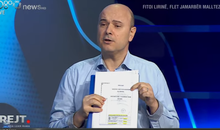
Malltezi: SPAK admits, we are in a process that began with Balla's false report
2025-07-10 22:34:16

Si të çliroheni nga bllokimet emocionale me anë të ushtrimeve
2025-07-10 21:57:24

Lala: Veliaj wanted to return as mayor
2025-07-10 21:40:46
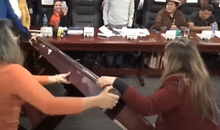
VIDEO/ Brawl in Bolivian parliament, deputies physically clash
2025-07-10 21:20:30


Albania experienced one of the longest heat waves of the last decade
2025-07-10 21:01:09

The Government approves new procedures for declaring residence in e-Albania
2025-07-10 20:39:32

Koka: Northerners will not forget Edi Rama's racist operation in Theth
2025-07-10 20:18:24
The 3 zodiac signs that will be most affected by the 'Full Moon' of July 10
2025-07-10 20:04:49
New director of the National Center of Cinematography appointed
2025-07-10 19:51:12
Korça/ 40-year-old man jumps from fifth floor balcony, in critical condition
2025-07-10 19:40:19
'Tired Woman'/ The Syndrome That Affects Thousands of Women Every Day
2025-07-10 19:34:02
Jane Birkin's original Hermès bag sells for $10 million
2025-07-10 19:26:22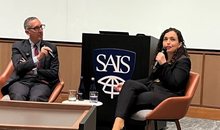

Britain-Ukraine agreement signed for 5,000 Thales missiles
2025-07-10 19:00:25
Fire in Zvërnec, flames endanger two hotels
2025-07-10 18:57:19
Croatia restores compulsory military service
2025-07-10 18:39:01
Spahia: The great truth of the strong accusation of the residents of Theth
2025-07-10 18:35:07


The Supreme Court left him in prison, Meta addresses the 'Constitution'
2025-07-10 17:57:21
New punishment with 'new' regulations
2025-07-10 17:54:46
EU translator fired over fears for Zelenskyy's safety
2025-07-10 17:45:37
'You are a policeman, but not God, take my soul', protest for Agon Zejnullahu
2025-07-10 17:41:21

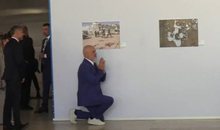
Video/ Rama repeats the scenario, kneels before Meloni again
2025-07-10 16:56:31
He set fire to a plot of olive trees, 50-year-old man arrested in Shijak
2025-07-10 16:46:19

Rubio: US and Russia have exchanged new ideas for Ukraine peace talks
2025-07-10 16:36:20
Death of 27-year-old, Lipjan Police Commander Resigns
2025-07-10 16:21:28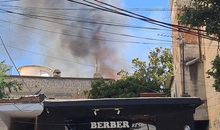
Video/ An apartment burns in Tirana near the New Bazaar
2025-07-10 16:09:36
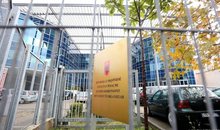

Jensila lights up the internet with her birthday greetings to Ledri
2025-07-10 15:42:08
They're full of pesticides! List of 12 products we need to be careful of
2025-07-10 15:31:04

Worker falls from scaffolding in Shëngjin, urgently sent to Trauma
2025-07-10 15:11:03
Malltezi: Within one day they seized my accounts, properties and shares
2025-07-10 15:01:23
EU: Israel has agreed to more aid to Gaza
2025-07-10 14:55:19


Murder of Reni Dobra, 23-year-old's vehicle pulled from the water
2025-07-10 14:29:23
Trump's tariffs on Brazil raise coffee prices
2025-07-10 14:16:07
Ursula von der Leyen survives no-confidence vote
2025-07-10 14:04:27


Fire in Lezha, flames near electrical substation
2025-07-10 13:32:24
Residents clash with police in Theth, a woman faints
2025-07-10 13:24:38
"Rama and Xanun"
2025-07-10 13:15:46

Zodiac signs most likely to get divorced in July 2025
2025-07-10 12:45:51
A scapegoat for an illegitimate Republic
2025-07-10 12:35:02
"He has devastated his own nation"/ Berisha: Rama imprisons his opponents!
2025-07-10 12:26:54

Albanian man injured with knife in Italy
2025-07-10 12:08:55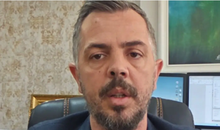
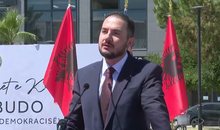





23-year-old in Mat drowned with rope, 4 suspects are being held
2025-07-10 10:58:53
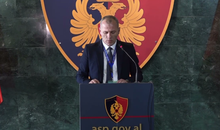
After the dismissals, the new director of the Shkodra Police is appointed
2025-07-10 10:30:10
BIRN: Rama's action for public spaces, a repeated spectacle
2025-07-10 10:29:11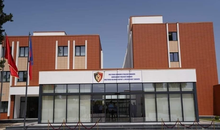
Action in Theth, Shkodra Police leaders dismissed
2025-07-10 10:16:28
Fatal accident on the Tirana-Durres highway
2025-07-10 10:01:58
The incinerator does not exist, but the government continues to increase funds
2025-07-10 09:51:45
Albania is aging at a rapid pace! 30% of the population is over 60 years old
2025-07-10 09:46:23
End of an era, Modric says 'goodbye' to Real Madrid
2025-07-10 09:36:09
Mount Dukat has been on fire for 6 days, residents request air intervention
2025-07-10 09:27:24

"Poverty on the rise"/ DW: Many people in Germany are not getting paid
2025-07-10 09:08:06
Horoscope, what do the stars have in store for you today?
2025-07-10 08:51:59




The scorching heat returns, the thermometer climbs to 40°C
2025-07-10 07:58:52
Morning Post/ In 2 lines: What mattered yesterday in Albania
2025-07-10 07:46:35
Tourist operator in Theth: They are demolishing our houses without warning
2025-07-09 22:54:57

Trump and Israeli commander warn: Gaza ceasefire could be near
2025-07-09 22:13:21
Fire in Elbasan Landfill, pedagogue: It is a cancer and environmental crime
2025-07-09 21:54:47


Dangerous summer, number of snake bites increases
2025-07-09 21:22:13
Berisha appeals again: Stop state terror against the residents of Theth!
2025-07-09 21:15:36
'Kissing disease' virus linked to several forms of cancer
2025-07-09 21:04:44
Malltezi confesses after release: Justice has become a political weapon
2025-07-09 20:51:48
Vokshi: Albania's EU integration has stalled due to lack of free elections
2025-07-09 20:37:21
